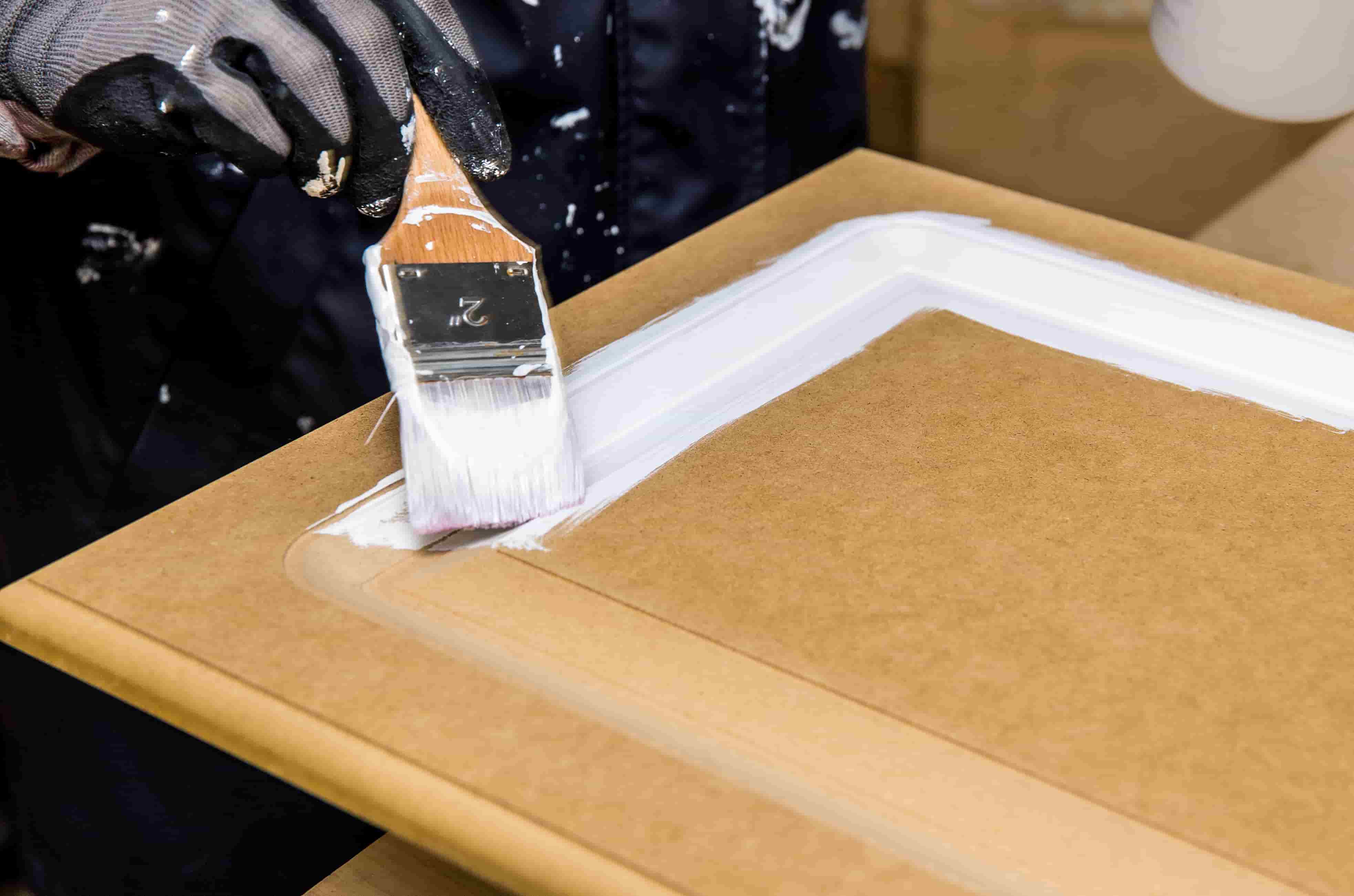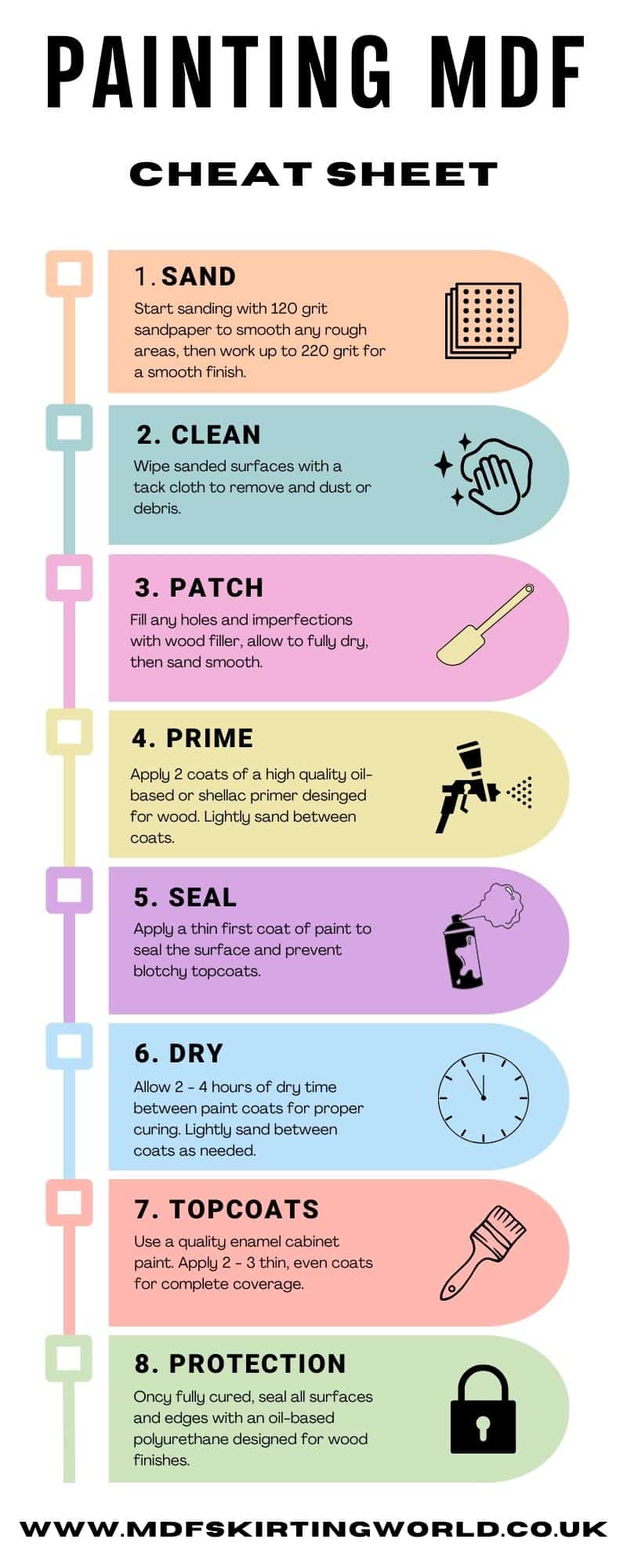
How To Paint MDF | Boards & Sheets | The Expert Method
Posted by Skirting World on 11th Aug 2023
8 Step Guide For Painting MDF
Medium density fibreboard (MDF) is a go-to material for DIY furniture projects. However, achieving a professional painted finish on MDF poses some challenges. The fibres require proper sealing and technique to avoid an uneven, blotchy appearance.
In this guide, we’ll walk through the key steps for painting MDF smoothly from start to finish. From surface prep to final protection, we’ll cover everything you need to know including essential supplies, number of coats and dry times.
Follow this guide for priming, painting and protecting MDF properly, and you’ll achieve a polished, high-end look.
How To Paint MDF
Tools & Materials Required To Paint MDF
- Sandpaper / Orbital Sander: 120 - 220 Grit
- Fine sanding sponges
- Tack Cloth
- Paintbrushes
- Paint roller
- MDF
- MDF Primer
- MDF Paint
- Masking tape
Instructions
- Surface Preparation
To ensure proper paint adhesion, start by sanding the MDF with 120 grit sandpaper to eliminate any rough patches or imperfections. Gradually switch to 220 grit to achieve a smooth, uniform surface. Carefully sweep or vacuum dust away. - Cleaning
Use a lint-free tack cloth to gently wipe down all sanded surfaces of the MDF prior to painting. This effectively removes fine dust particles that could otherwise become embedded in the first coats of paint. - Patching
Dab any small holes, cracks, or flaws in the MDF with wood filler compound and allow to fully cure per the manufacturer's directions. Once hardened, carefully sand flush with the surrounding surface. - Priming
A quality oil-based or shellac primer formulated specifically for wood provides an optimal foundational layer for the paint. Apply two coats, allowing sufficient drying time in between. Gently sand again with fine grit sandpaper to create a perfectly smooth base. - Seal Coat
Apply a thin first coat of paint to act as a sealant. Using a brush, roller, or paint sprayer, lightly coat the entire MDF surface with a thin layer of your chosen paint colour. (Pro Tip: Use paint thinner for a finer coat) - Painting
Apply additional thin coats of the chosen paint colour. Use a high-quality brush, roller, or paint sprayer to maintain an even application of paint. Allow 2-4 hours of drying time between each coat to enable proper curing and drying without issues like sagging, running, or textural irregularities. - Topcoats
For durability and richness of colour, apply 2-3 coats of a premium enamel paint designed for wood surfaces, allowing thorough drying between delicate coats. - Protection
Once the paint has fully cured, seal all surfaces including edges with an oil-based polyurethane ideal for wood finishes. This adds protection and enhances the depth of the painted surface.
Common Mistakes To Avoid When Painting MDF
- Not sanding properly
- Using the wrong primer
- Rushing the process
- Skimping on paint coats
- Not backbrushing when rolling
- Painting over flaws
- Neglecting the edges
Skipping adequate sanding or using only a fine grit will result in poor paint adhesion. Make sure to start with a coarse 120 grit and work up to 220 grit for the smoothest finish.
soak into MDF unevenly and can leave a blotchy appearance. Invest in a quality oil-based primer formulated for MDF and other composite wood products.
Applying multiple coats of paint too quickly without allowing proper dry time will lead to drips, streaks, and textural issues in the final finish. Be patient and follow the recommended recoat times.
It takes 2-3 finish coats for full, even coverage on MDF. Don't try to get away with a single coat or the results will look thin and uneven.
Simply rolling primer and paint on MDF will create a noticeable stipple. Always follow by gently smoothing the wet coating with light backbrushing.
Any imperfections, holes, or damages should be patched with wood filler and sanded smooth prior to painting for a seamless finish.
Painting only the flat surfaces of MDF will allow moisture damage and swelling along the edges over time. Take care to seal all edges and ends with primer and paint.
Additional Tips for Painting MDF
- Use oil-based primer - it seals better than water-based primers and prevents blotchiness
- Lightly sand between all coats - smooths brush marks and creates level surface
- Always backbrush when rolling - eliminates roller marks for smooth finish
- Seal all edges before assembly - prevents moisture damage and swelling
- Use high-fill primer to fill grains - creates ultra smooth surface for painting
- Thin first coat 10-15% with paint thinner - helps prevent blotchy topcoat
- Buy quality brushes - holds more paint, less brush strokes, smoother finish
- Use painter's pyramids for quick drying - prevents dust specs in finish
- Spray paint horizontally, brush/roll vertically - minimizes brush strokes
- Use satin or semi-gloss sheen - hides imperfections better than flat
- Take your time and do light coats - rushing causes drips, texture issues










